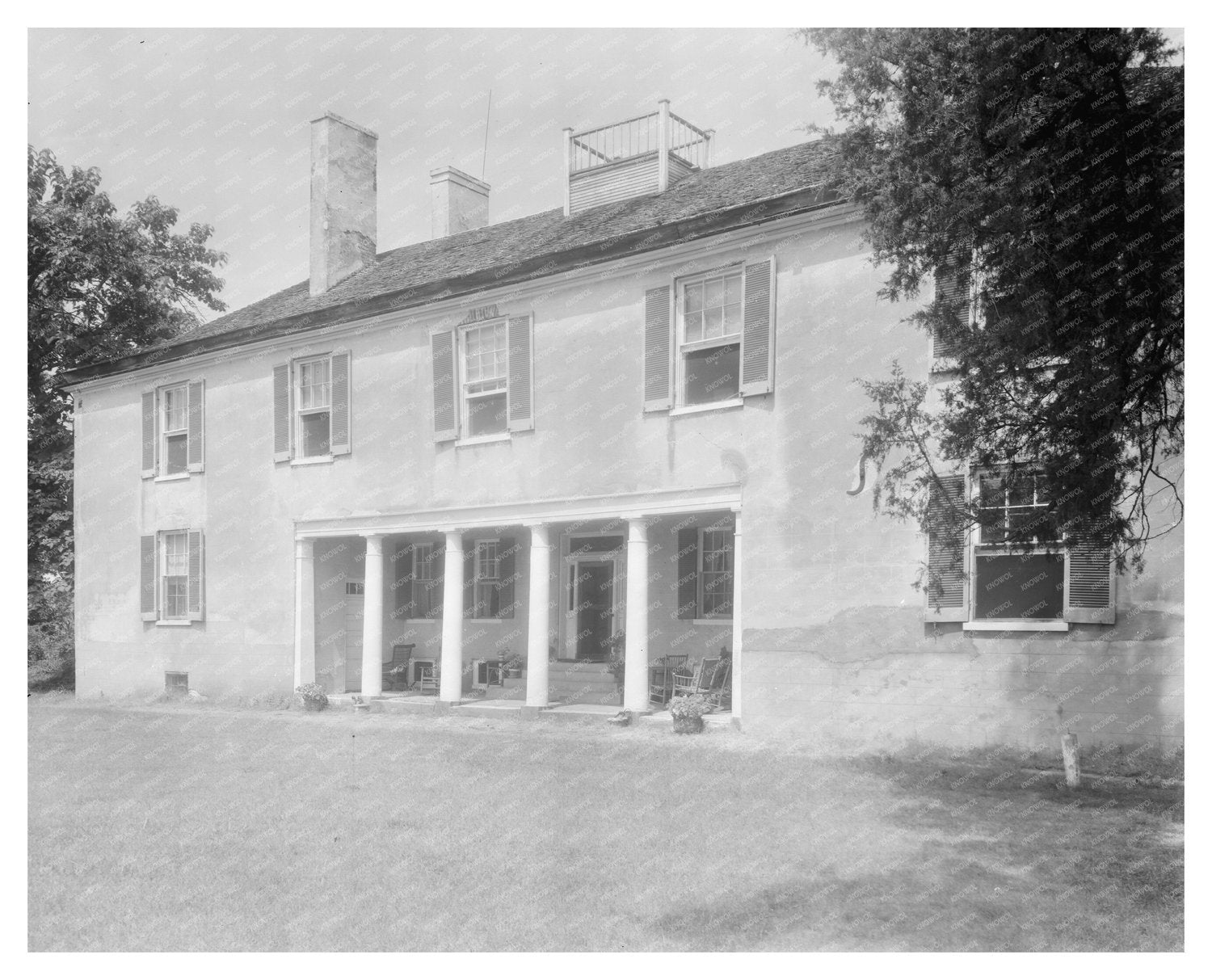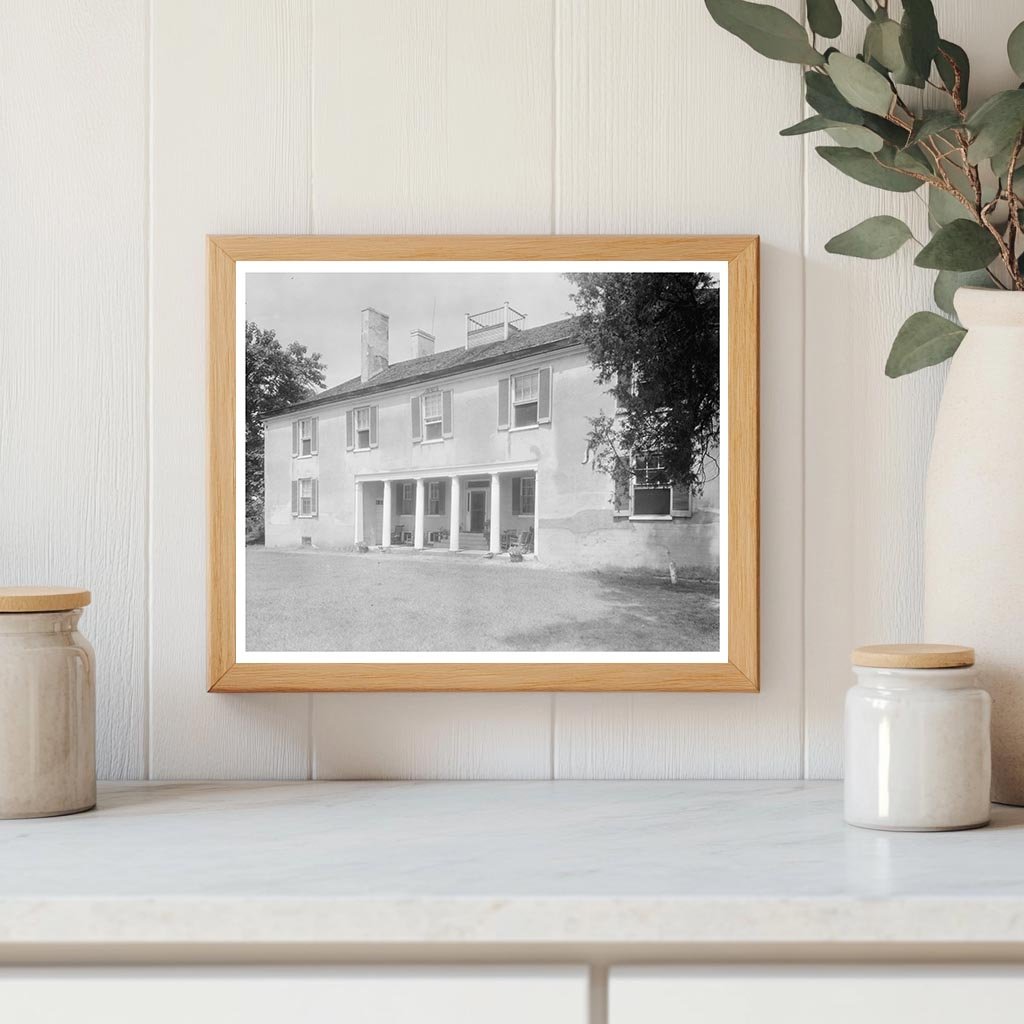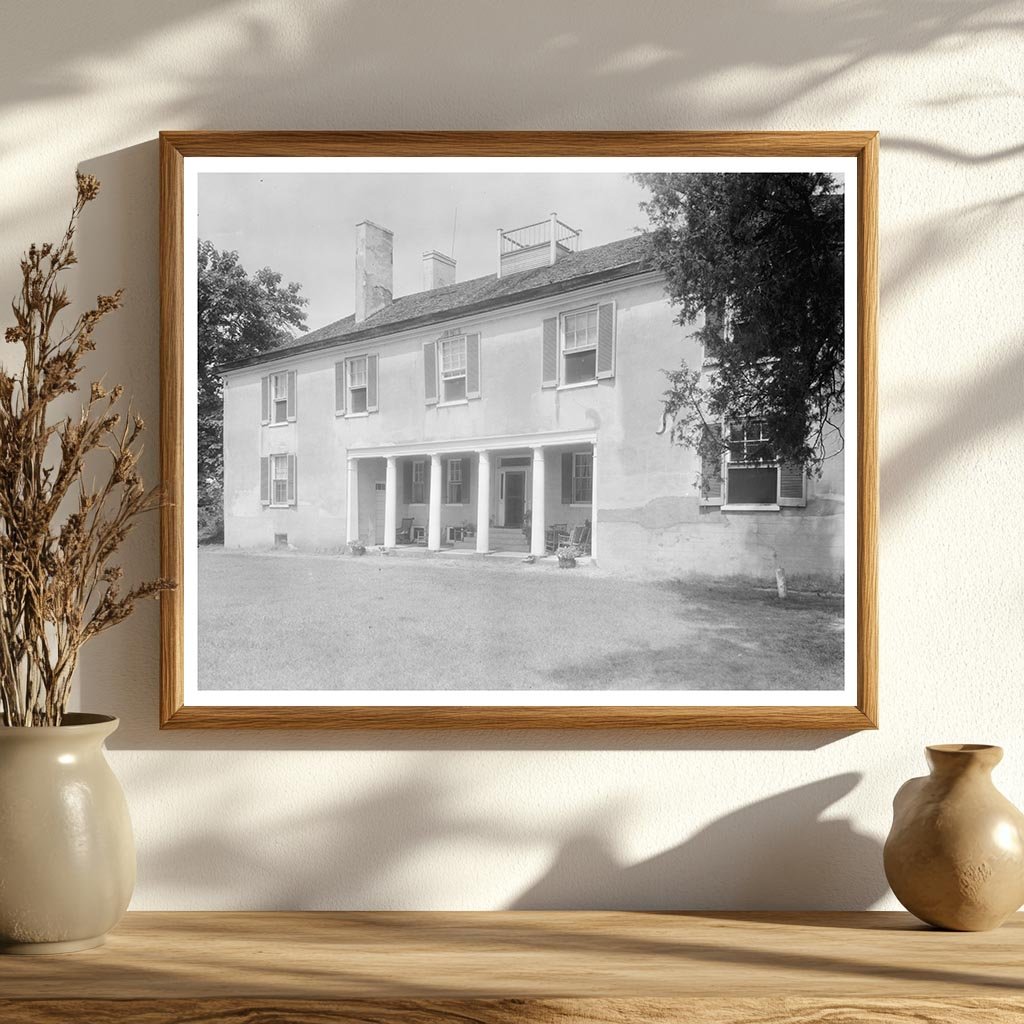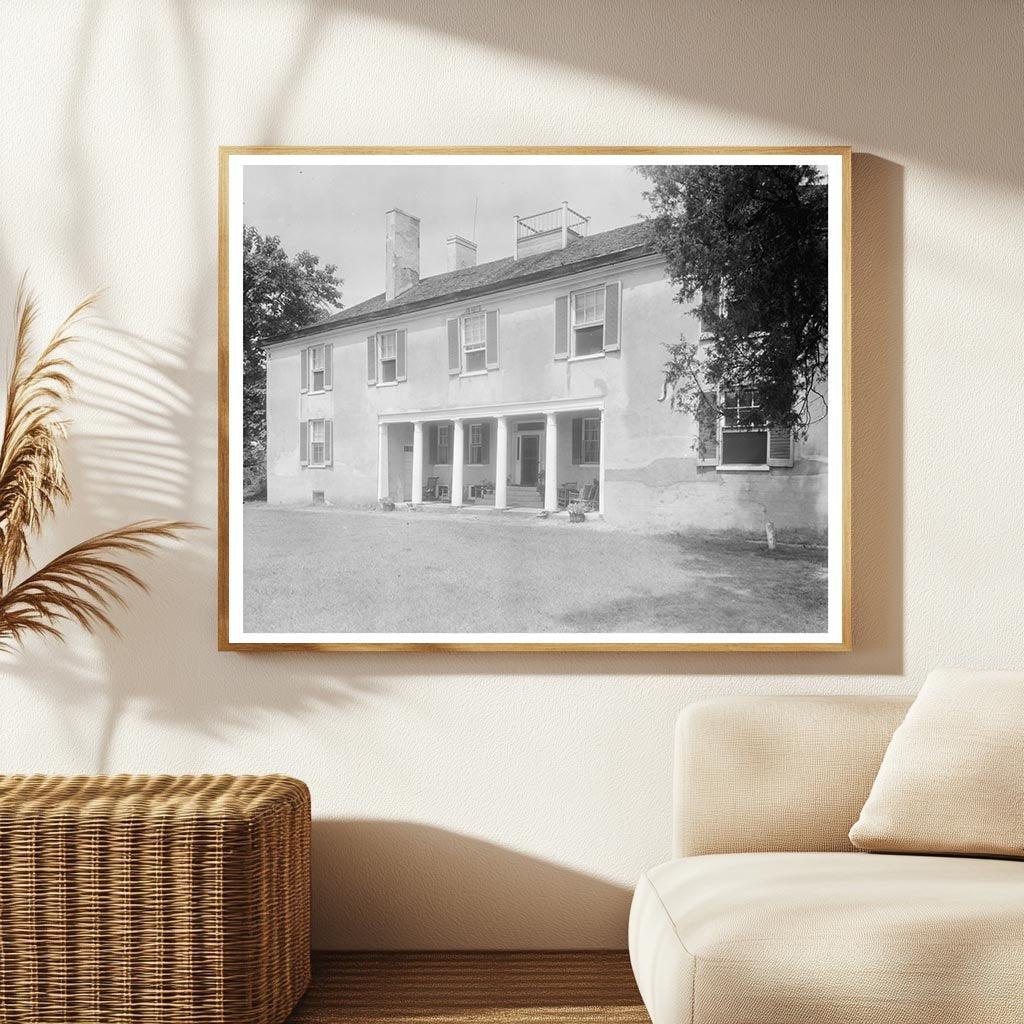



Leonardtown, MD 1760: Keys Historic Home Photo
This vintage photograph captures a significant architectural landmark in Leonardtown, St. Marys County, Maryland. The building, dating back to 1760, is known as the ancestral home of Francis Scott Key, the writer of the U.S. National Anthem. The structure features an inset portico, reminiscent of other notable Maryland homes, such as Bachelors Hope.
The image is part of the Carnegie Survey of the Architecture of the South, providing valuable insight into early American architectural styles. It showcases elements like columns and porches, set against a backdrop of manicured lawns and outdoor furniture, which were integral to the lifestyle of that era.
Acquired from the Frances Benjamin Johnston estate in 1953, this photograph serves as a historical document, illustrating the architectural heritage of Maryland. It is an essential addition for collectors and history enthusiasts interested in the rich narratives behind Americas historic homes.

Leonardtown, MD 1760: Keys Historic Home Photo
